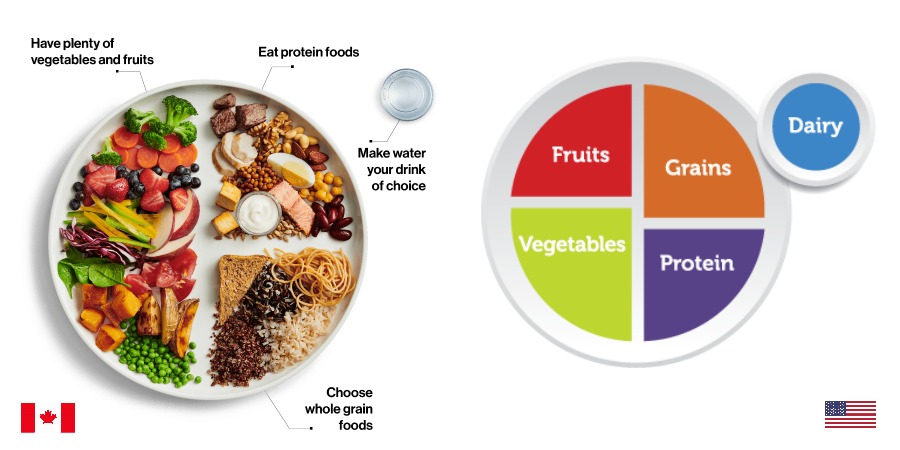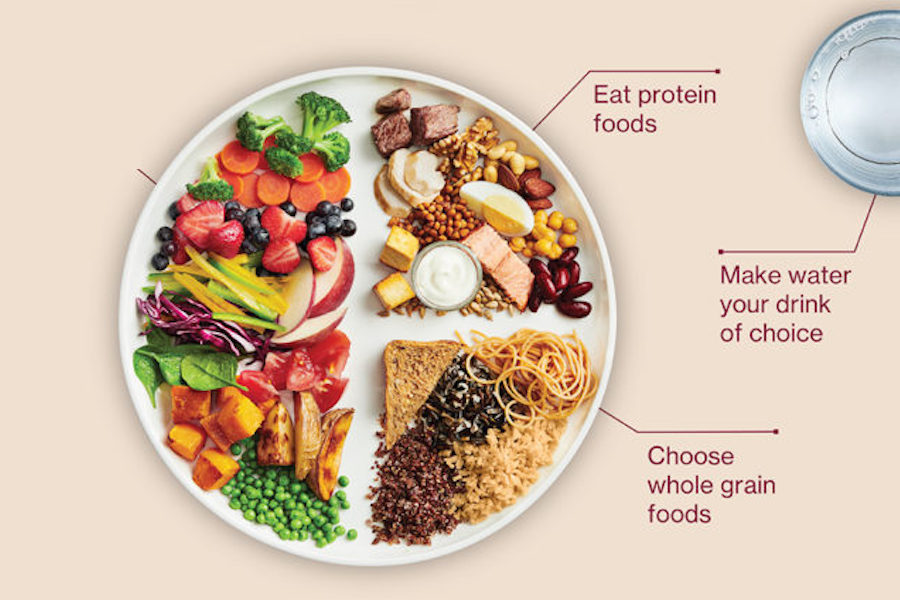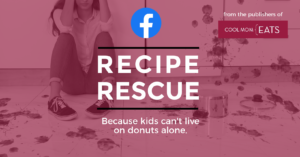The release of Canada’s new food guidelines this week is causing quite a stir in food circles, and for good reason. The authors of this new study refused to base their recommendations on any study that was funded by the food industry. So it’s not surprising that their recommendations are very different from what we’re seeing in the US.
Or, maybe it’s surprising just how different it is.
Here are some of the notable takeaways for families from Canada’s new food guidelines, that I think are definitely worth considering. For full details, feel free to peruse the entire 62-page document at food-guide.canada.ca/en if you’d like the details.
Related: Our favorite vegetarian cookbooks for families
 Canadian food guidelines vs US food guidelines, visualized
Canadian food guidelines vs US food guidelines, visualized
Food Guideline 1: Eat a mostly plant-based diet.
Canada’s protein part of the plate clearly includes lots of nuts, beans, and tofu as protein options, compared to the US’s purple “protein” square, which is fairly vague until you really search for details. (Though it was surely an improvement over the US “food pyramid” of days past.)
As I have switched to a mostly vegan diet this past year, the number one question I get is, “Where do you get your protein?” It seems Americans just aren’t as educated about the many, many plant-based sources of protein when compared with the bombardment of marketing messages from lobbying groups and councils representing various animal proteins.
I think it’s helpful to families to see a visualization that makes nuts, beans, legumes and eggs as no less important than meat, fish or poultry.
Food Guideline 2: Drink more water
Notably, Canada explicitly recommends “making water your drink of choice,” by choosing a glass of water in lieu of sugary drinks.
If you’re curious about milk vs water, we looked specifically for Canada’s guidelines about milk, and did find information about calcium and Vitamin D recommendations, referencing milk as a good source of each. However in the US, the recommendation is specifically to consume 2-3 cups of fat-free/low-fat but high-protein dairy a day. Canada’s guidelines are far more broad.
Food Guideline 3: Cook at home more often.
I love that their guide encourages more home-cooking from scratch (ahem, you can check our our meal plans for inspiration, if this is challenging for you), teaching your children to cook too, reading food labels carefully, and being aware of food marketing. This all also helps reduce unnecessary waste, which helps the environment too.
Related: 15 healthy foods to always keep in your pantry this year
Food Guideline 4: Be aware of food marketing
Not all food is bad, not all food groups are bad, and not all food marketing is bad. But still, I’m impressed by the specific Canadian guidelines calling attention to food marketing.
They not only urge people to become more educated on advertised products that may have too much sodium, sugar or saturated fats, but they list the types of marketing that are less obvious than TV commercials — right down to product placement in movies, magazines, on social media posts, and even in song lyrics!
Ed Note: To be sure, when we work with brand partners on this site, we carefully select companies we can stand behind, and we always always disclose the relationship. And not at the *end* of an article or an Instagram post, either. (“Surprise! This was a sponsored message!” Nope.) Because even while w may love a certain brand of awesome greek yogurt, for example, or a great organic meal-delivery service, we believe our readers have the right to know about the nature of our relationship.
Food Guideline 5: Eat with people you love.
Another interesting aspect if Canada’s new food guidelines is the suggestion to try and eat as often as possible with family or friends, so you’re sharing a meal in a positive, happy environment.
You’re more likely to try new foods this way, and to develop an appreciation for new cultures and cuisines, Take time when you eat, and relax and enjoy your company. You’ll be happier this way, which has health impacts on your body, plus you’ll be better able to notice when you’re full, and avoid overeating.
As you’re teaching your kids about healthy nutrition, maybe consider downloading both Canada and the US food guides, and talk with your kids about the differences so you can decide together on more healthy choices. As for me, I say, Great job, Canada! As a mom who wants my kids to grow up healthy, I’m very appreciative of non-biased recommendations for our nutrition.





